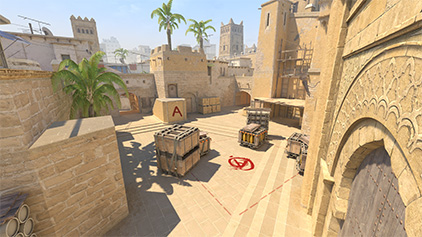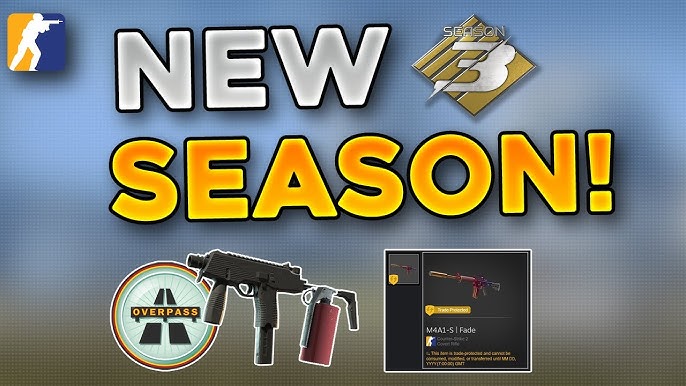The Evolving Landscape: CS2 Map Design and Its Impact on Competitive Esports Hey XenGamer readers, Vega here.

Hey XenGamer readers, Vega here. Some of you might remember me from the Counter-Strike: Source days, churning out custom maps in my spare time. These days, I'm knee-deep in the indie game development world, but I still keep a close eye on the Counter-Strike scene. Today, I want to delve into something that's been on my mind a lot lately: the significant changes in map design philosophy in Counter-Strike 2 (CS2) and how those changes are rippling through the competitive esports landscape. It's a fascinating evolution, and I think it's worth exploring.
From Classic Aim Duels to Modern Tactical Depth
The core of Counter-Strike has always been that simple, elegant dance of terrorists versus counter-terrorists. And for years, maps reflected that simplicity. Think of de_dust2. It's practically the poster child for classic Counter-Strike map design. Open lanes, straightforward rotations, and an emphasis on pure aim duels. Skill was king, and map knowledge was largely about angles and timings.
But look at maps like Overpass, and particularly Anubis, a relatively recent addition to the competitive pool. These are different beasts entirely. They're far more compartmentalized, with multiple chokepoints, intricate pathways, and verticality playing a much larger role. The CS2 iterations of these maps have further refined these aspects. The changes to Overpass, for instance, are a testament to this shift. The additions and tweaks around A long and the bathrooms provide more options for both Ts and CTs, making it less predictable. It isn't just about who can click heads faster. It's about coordinated pushes, utility usage, and outsmarting your opponent. This shift is a core CS2 map design change impacting esports.

Is this change beneficial? I think it's complex. On one hand, it elevates the strategic depth of the game. Teams need to work together more effectively, develop more sophisticated strategies, and adapt on the fly. It's arguably a more engaging spectator experience, too. On the other hand, some purists argue that it sacrifices the raw skill element that made Counter-Strike so appealing in the first place. It's a valid point. A lone wolf with incredible aim might not be able to carry a team as easily in these more complex environments. Competitive Counter-Strike map strategy has fundamentally changed.
Reshaping the Competitive Landscape
These CS2 map changes esports are undeniably having a significant impact on the competitive scene. The changes in the map pool are forcing teams to adapt and evolve. Map specialists, players known for their expertise on specific maps, are seeing their value shift. If their signature map gets reworked or removed entirely, they need to diversify their skillset, and this can be difficult.
Teams now need a broader range of map expertise to be truly competitive. No longer can a team rely on dominating a few familiar maps while being weak on others. Coaches are spending more time analyzing map layouts, developing new strategies, and preparing their teams for any eventuality. We’re seeing new tactics emerge, such as more creative use of utility to control key areas, more focus on mid-round calling and adaptation, and a greater emphasis on team-based executes rather than individual plays. Valve CS2 map updates demand constant study.

The introduction of new or remade maps like Anubis shakes things up even further. Anubis, with its intricate design and emphasis on verticality, demands a different playstyle than many other maps. It rewards teams that can control key areas, rotate effectively, and exploit positional advantages. This can lead to changes in team compositions as coaches look for players who excel on these types of maps. The removal of iconic maps creates a void that teams scramble to fill. It's a bittersweet moment, as these maps hold so many memories, but it also creates opportunities for new strategies and new stars to emerge.
A Mapper's Reflection
From my perspective, having spent countless hours crafting levels, I find the evolution fascinating. There's a part of me that's nostalgic for the simpler days of Counter-Strike: Source. There was a certain purity to the gameplay that I appreciated. It was more about individual skill and less about complex strategies. However, as a game developer, I also appreciate the challenge of creating more intricate and engaging environments.
Working in indie game development has broadened my perspective. I’ve learned to think about level design not just in terms of gameplay, but also in terms of storytelling, atmosphere, and player experience. I try to create spaces that are not only fun to play in, but also tell a story and create a sense of immersion. Vega CS2 map analysis benefits from this experience.

The new lighting system in CS2 is a game-changer, literally. As someone who’s spent hours tweaking light entities in Hammer, I appreciate the impact of dynamic lighting on gameplay. It adds another layer of complexity, forcing players to adapt to changing conditions and use light and shadows to their advantage. It also opens up exciting possibilities for map designers. We can create more visually stunning and immersive environments. It changes how smokes work, because smoke is now dynamic and reacts to light.

The Future of CS2 Map Design
So, what does the future hold for map design in Counter-Strike 2? I think we'll continue to see a trend towards more complex and strategic environments. Valve seems committed to pushing the boundaries of what's possible, and I'm excited to see what they come up with next.

The CS2 competitive map pool will likely continue to evolve, with new maps being introduced and older maps being reworked or retired. This will keep the competitive scene fresh and exciting, and it will force teams to constantly adapt and improve. CS2 map design impact is a never-ending story.

Ultimately, the success of Counter-Strike 2 will depend on its ability to balance the classic elements that made the game so popular with the new features and innovations that Valve is introducing. It's a delicate balancing act, but I'm confident that Valve is up to the task. The game is pushing boundaries, both visually and strategically. The best CS2 map strategies for winning need to keep evolving. I'm excited to see how it all unfolds. Thanks for reading!


